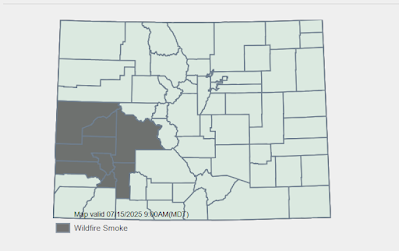If you are sneezing a bit more than normal today or have a scratchy throat, wildfire smoke is likely to blame. We are not seeing overly heavy smoke anywhere across the state Thursday morning, but there are plenty of areas measuring moderate levels of particle pollution.
Unfortunately it appears that smoke levels will increase over the next 24 hours. The main culprits of the current particle pollution are the Dragon Bravo fire in northern Arizona and the Monroe Canyon fire in central Utah. Combined, these two fires have consumed nearly 150,000 acres under record-breaking dry conditions.
Starting today, the transport winds at these two fires will begin to shift to a more westerly direction. The consequence of this will be an increase in smoke moving towards Colorado Thursday afternoon and into Friday. At this point, it is difficult to know exactly where the heaviest smoke in Colorado will be on Friday. However it does appear that the entire state will be impacted to some degree, so please prepare to take extra actions to protect your health. We will certainly keep you updated on the very latest developments, including issuing air quality health advisories if needed.

























